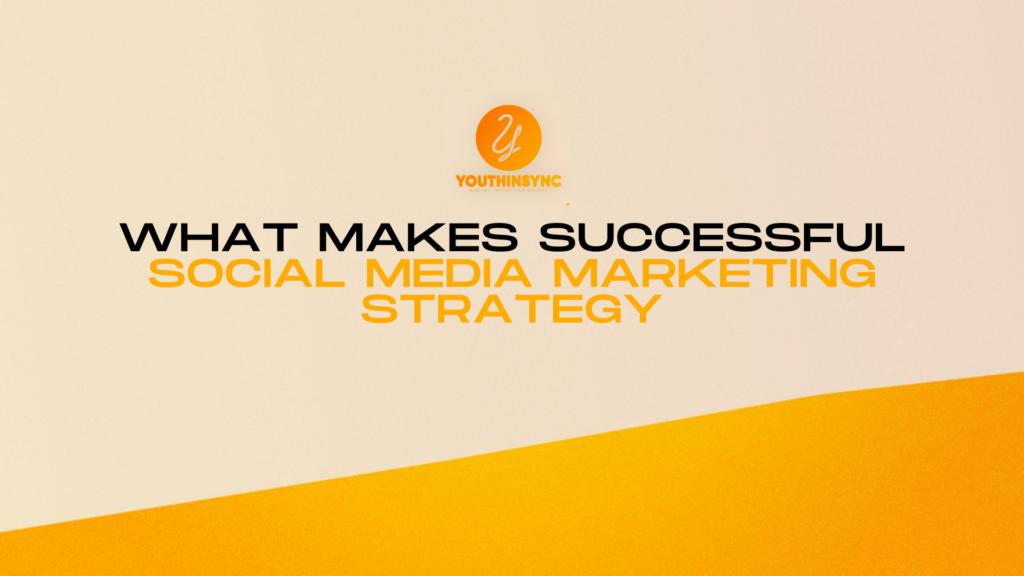In today’s digital era, social media has become an essential platform for businesses to connect with their audience, build brand awareness, and drive growth. However, with the increasing competition and ever-changing algorithms, having a well-structured social media marketing strategy is crucial for achieving success. This blog will guide you through the key elements that make up a successful social media marketing strategy, providing insights and best practices to help you navigate the complex world of social media.
Understanding Your Audience
Why Knowing Your Audience is Crucial
To create a successful social media marketing strategy, the first step is to understand who your audience is. Without a clear understanding of your target audience, your efforts may not resonate, leading to wasted resources and missed opportunities. Knowing your audience allows you to tailor your content, messaging, and engagement efforts, ensuring that they align with the needs, preferences, and behaviors of the people you want to reach.
Tools and Techniques for Audience Research
There are various tools and techniques available to help you identify and understand your target audience. Social media platforms like Facebook and Instagram offer built-in analytics that provide valuable insights into the demographics, interests, and behaviors of your followers. Additionally, tools like Google Analytics, surveys, and customer feedback can provide further data to help you create detailed audience profiles.
Creating Buyer Personas
Once you’ve gathered enough information, it’s time to create buyer personas—fictional representations of your ideal customers. These personas should include details such as age, gender, location, interests, pain points, and buying behaviors. By using these personas, you can guide your content creation, engagement strategies, and advertising efforts, ensuring that they resonate with the right people.
Setting Clear Goals and Objectives
The Importance of Defining Goals
Every successful social media marketing strategy starts with clear and measurable goals. These goals serve as the foundation for all your social media efforts, guiding your actions and helping you track progress. Without well-defined goals, it’s challenging to determine the effectiveness of your strategy or make informed decisions on where to focus your resources.
Aligning Goals with Business Objectives
Your social media goals should align with your overall business objectives. Whether you’re looking to increase brand awareness, drive website traffic, generate leads, or boost sales, your social media strategy should support these broader goals. For example, if your business objective is to increase sales, your social media goal might be to generate a specific number of leads through targeted campaigns.
Examples of SMART Goals
When setting goals, it’s essential to make them SMART: Specific, Measurable, Achievable, Relevant, and Time-bound. For instance, instead of setting a vague goal like “increase social media followers,” a SMART goal would be “increase Instagram followers by 20% within three months by posting engaging content and running a targeted ad campaign.”
Choosing the Right Social Media Platforms
Overview of Popular Platforms
Not all social media platforms are created equal. Each platform has its unique audience, strengths, and weaknesses, making it essential to choose the right platforms for your business. Some of the most popular platforms include:
- Facebook: Ideal for reaching a broad audience with diverse demographics.
- Instagram: Great for visual content and engaging younger audiences.
- LinkedIn: Best suited for B2B marketing and professional networking.
- Twitter: Effective for real-time updates and engaging in conversations.
- Pinterest: Perfect for visual inspiration and targeting niche markets.
Selecting Platforms Based on Audience and Goals
When selecting platforms, consider where your target audience spends their time and how each platform aligns with your goals. For example, if your goal is to engage with professionals and generate B2B leads, LinkedIn might be your best bet. On the other hand, if you’re targeting a younger, visually-oriented audience, Instagram and Pinterest could be more effective.
Platform-Specific Strategies
Each platform requires a tailored strategy to maximize its potential. For instance, Instagram’s algorithm favors high-quality visuals and consistent posting, while LinkedIn rewards thought leadership and professional networking. Understanding the nuances of each platform allows you to create content and campaigns that perform well and resonate with your audience.
Crafting a Content Strategy
The Role of Content in Social Media Marketing
Content is the heart of your social media marketing strategy. It’s what captures your audience’s attention, communicates your brand message, and drives engagement. However, not all content is created equal. To be effective, your content needs to be relevant, valuable, and tailored to your audience’s needs.
Types of Content That Resonate
Different types of content perform well on different platforms. For example:
- Visual Content: Images, infographics, and videos tend to perform well on Instagram, Pinterest, and Facebook.
- Educational Content: Blogs, tutorials, and how-to guides are effective on LinkedIn and Twitter.
- Interactive Content: Polls, quizzes, and live videos encourage engagement and are popular on platforms like Facebook and Instagram.
Content Calendar and Consistency
Consistency is key to maintaining an active and engaged social media presence. Creating a content calendar helps you plan and organize your posts, ensuring that you’re consistently delivering fresh and relevant content. A well-planned content calendar should include a mix of content types, posting frequencies, and platform-specific strategies.
Creating Engaging and Shareable Content
Engaging content is content that resonates with your audience and encourages them to interact with it. To create engaging content, focus on storytelling, emotional appeal, and visual impact. Additionally, shareable content—content that people want to share with their network—can significantly extend your reach and amplify your brand message.
Engaging with Your Audience
Building a Community
Social media is not just a platform for broadcasting your message; it’s a place to build a community around your brand. By engaging with your audience, you can foster relationships, build trust, and create brand loyalty. Engagement goes beyond likes and shares; it’s about meaningful interactions that make your audience feel valued and heard.
The Role of Social Listening
Social listening involves monitoring social media channels for mentions of your brand, competitors, and relevant keywords. By listening to what your audience is saying, you can gain valuable insights into their needs, preferences, and pain points. This information can help you refine your strategy, address customer concerns, and create content that resonates with your audience.
Responding to Comments and Feedback
Engagement is a two-way street. Responding to comments, messages, and feedback shows that you care about your audience’s opinions and are actively involved in the conversation. Whether the feedback is positive or negative, timely and thoughtful responses can enhance your brand’s reputation and strengthen customer relationships.
Leveraging Paid Advertising
Introduction to Social Media Advertising
While organic reach is valuable, social media advertising allows you to target specific audiences, amplify your message, and achieve your goals more quickly. Platforms like Facebook, Instagram, and LinkedIn offer robust advertising tools that enable you to create highly targeted campaigns based on demographics, interests, behaviors, and more.
Creating Effective Ad Campaigns
To create effective ad campaigns, start by defining your objectives—whether it’s driving traffic, generating leads, or boosting sales. Next, craft compelling ad copy and visuals that resonate with your target audience. Finally, use A/B testing to experiment with different ad variations and optimize performance based on the results.
Targeting, Retargeting, and Budgeting
Targeting allows you to reach the right people with your ads, while retargeting enables you to re-engage users who have previously interacted with your brand. Setting a budget is also crucial; consider your overall marketing budget, your goals, and the potential return on investment (ROI) when allocating funds to social media advertising.
Monitoring and Measuring Success
Key Metrics to Track
Measuring the success of your social media marketing strategy is essential for continuous improvement. Key metrics to track include:
- Engagement Rate: The percentage of people who interact with your content.
- Reach: The number of unique users who see your content.
- Conversions: The number of users who complete a desired action (e.g., signing up for a newsletter).
- Follower Growth: The rate at which your audience is growing.
Tools for Social Media Analytics
There are several tools available to help you monitor and analyze your social media performance. Google Analytics, along with native platform analytics like Facebook Insights and Twitter Analytics, provides valuable data on audience behavior, content performance, and campaign effectiveness.
Interpreting Data and Adjusting Your Strategy
Data alone is not enough; it’s essential to interpret it and make informed decisions. Use the insights gained from analytics to identify what’s working, what’s not, and where there’s room for improvement. Continuously adjusting your strategy based on data ensures that you’re always moving closer to your goals.
Adapting to Changes and Trends
Staying Updated with Trends
The social media landscape is constantly evolving, with new trends, features, and platforms emerging regularly. Staying updated with these changes is crucial for maintaining a successful strategy. Whether it’s a new algorithm update, a trending content format, or a shift in user behavior, being aware of trends allows you to adapt quickly and stay ahead of the competition.
Pivoting Strategies Based on Platform Updates
Social media platforms frequently update their algorithms and features, which can impact your strategy. For example, changes to Facebook’s algorithm might require you to focus more on video content or paid advertising. Being flexible and willing to pivot your strategy based on these updates is key to long-term success.
Examples of Brands Successfully Adapting
Many brands have successfully adapted to social media changes by embracing new trends and technologies. For instance, brands that quickly adopted Instagram Stories and TikTok videos have seen significant engagement and growth. By staying agile and open to change, you can ensure that your social media strategy remains effective and relevant.
Conclusion
A successful social media marketing strategy is not a one-size-fits-all approach; it requires a deep understanding of your audience, clear goals, platform-specific strategies, engaging content, and continuous monitoring and adaptation. By following the key elements outlined in this guide, you can create a social media strategy that drives results, builds brand awareness, and fosters lasting relationships with your audience. Start refining your strategy today and watch your social media presence thrive.

